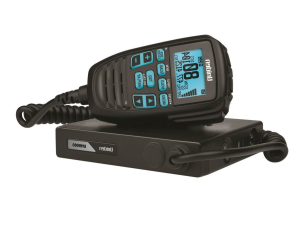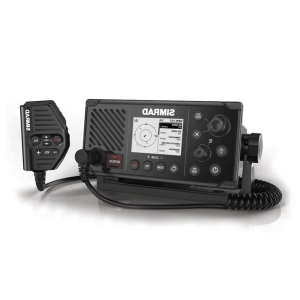In order to understand UHF vs VHF frequencies, you must first understand that all communication systems, including your cell phone or any two-way radio system, work with an operating frequency. The government regulates these frequencies and the devices that use them.
People have many requirements for their radios, so there are several frequencies to satisfy their various expectations. Two-way radios and communication systems use the UHF and VHF radio frequencies.
Table of Contents
THE DIFFERENCES BETWEEN UHF VS VHF
The main difference between the two frequencies, “UHF vs VHF,” is that UHF (ultra-high frequency) travels less distance but occupies more bandwidth.
In the United States, the FCC oversees operating frequencies and classifies them into four categories.
UHF vs VHF Frequencies:
High-band VHF: 169-216 MHz
Low-band VHF: 49-108 MHz
High-band UHF: 900-952 MHz
Low-band UHF: 450-806 MHz
Main users include licensed broadcasters in television and radio or commercial communication services that provide cell phones and two-way radios.
Generally speaking, UHF’s shorter radio waves make it best suited to wireless and indoor use, where there are more permeable obstacles. Alternatively, VHF radios are excellent for outdoor use; construction workers, aviators, and boat captains rely on VHF radios.
PROS AND CONS OF UHF

A major difference between UHF vs VHF is that UHF radio waves are shorter, measuring 12 to 24 inches. Because of this, UHF antennas are less noticeable than VHF antennas. The radio range is also shorter, but the bandwidth occupies more space. Although interference and dropouts are more likely than on VHF, you can get a broader range of audio options.
GPS, cordless phones, Bluetooth, walkie-talkies, cell phones, Wi-Fi, and television broadcasting all use UHF technology. You can only use UHF within your line of sight so that obstructions may disrupt your transmission. Despite the fact that walls aren’t too much of a barrier, UHF equipment is well suited to work in offices, hotels, and warehouses.
The biggest advantage of UHF is that the equipment does not take up as much space; however, it takes a lot of effort to manufacture UHF equipment, so operating costs might be higher. Midland Radio’s BIZTALK® BR200 Business Radio is the perfect solution to all your UHF communication needs. For interference-free operation, warehouses, hotels, and retail operations can benefit from the BIZTALK® BR200’s 16 channels and 142 privacy codes. The long-lasting Li-ion battery also features an additional charging port, so you will never run out of power.
PROS AND CONS OF VHF

VHF consists of 30 to 300 MHz radio waves and is used in critical communication systems, like FM Radio, marine communications, long-range data transmission, and two-way land mobile radio systems.
VHF cannot exceed the 100-mile radius of the local radio horizon. Still, you’re less likely to experience interferences due to atmospheric noise and issues with your electrical equipment when you use VHF. However, comparing UHF vs VHF, the radio frequencies of VHF are longer than UHF.
Also important is the distinction between low-band and high-band VHF. Low-band VHF serves radio-controlled toys, wireless microphones, cordless phones, and other low-cost equipment.
VHF high-band is a great choice for more professional applications. It is safe to use the lowest level of high-band VHF (169-172 MHz) across the country without fear of interference from television. Known as travelling frequencies, these networks offer high reliability, especially when on the move. The U.S. Government and some armed forces rely heavily on high-band VHF for communication.
VHF television channels between 7 and 13 are available on high-band frequencies between 174 and 216 MHz, and high-quality audio is the norm for VHF channels between 174 and 216 MHz.
Consider a radio like Midland’s DBR2500 Dual Band Amateur Two-Way Radio if you have to choose between frequency networks, VHF vs UHF. In addition to a wide selection of UHF and VHF channels and critical applications, such as weather alerts, two-way radios are essential survival tools.
Which is Better VHF or UHF?
You can choose either a VHF or UHF frequency depending on what you are going to use them for. In most cases, VHF is used outdoors where there are no obstructions. If barriers do not block VHF frequencies, they travel further. Only use VHF if you are in a wide-open space, such as a field. VHF has smaller frequencies, so there is a lot of interference with other radios.
On the other hand, UHF signals are generally better for long-distance communication. Radios for indoor use like buildings or in cities are better suited to UHF. Comparing UHF vs VHF, UHF is less likely to interfere with other two-way radios than VHF. UHF signal does a better job of reaching through wood, steel, and concrete, so it reaches farther inside the building than VHF.
UHF vs VHF Radio Frequency Range Band Chart:
0.003 MHz- 0.03 MHz | Very Low Frequency (VLF) |
.03 MHz – 0.3 MHz | Low Frequency (LF) |
0.3 MHz – 3 MHz | Medium Frequency (MF) |
3 MHz – 30 MHz | High Frequency (HF) |
30 MHz – 300 MHz | Very High Frequency (VHF) |
300 MHz – 3,000 MHz | Ultra-High Frequency (UHF) |
3,000 MHz – 30,000 MHz | Super High Frequency (SHF) |
30,000 MHz – 300,000 MHz | Extra High Frequency (EHF) |
UHF VS VHF: WRAPPING IT UP
Signal frequencies each have their own strengths and weaknesses. UHF equipment is more difficult to manufacture and may be more expensive, but VHF equipment may experience more interference. The U.S. Coast Guard and other maritime facilities use VHF for communication in high-band mode.
For use when exploring the woods or if you need a reliable way to communicate at work, purchasing a two-way radio system that utilizes either of these frequency networks (or can switch between them) is a wise decision.
Read More:
- Spectrum Self Installation – Updated Internet Installation Guide 2022
- PreAmp Vs Amp: How Do They Differ And Do I Need Both?
- IMAX vs XD: The Difference Between XD and IMAX Theaters 2022
- Boost TV Antenna Signal Using Aluminum Foil? – Complete Guide 2022
- How to Connect Phone to Vizio Smart TV – Detailed Guide 2022
